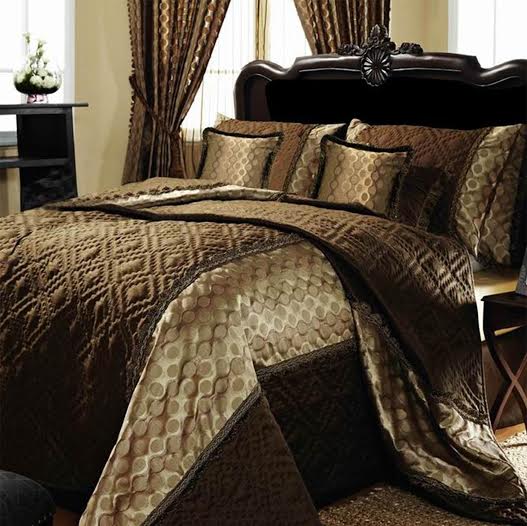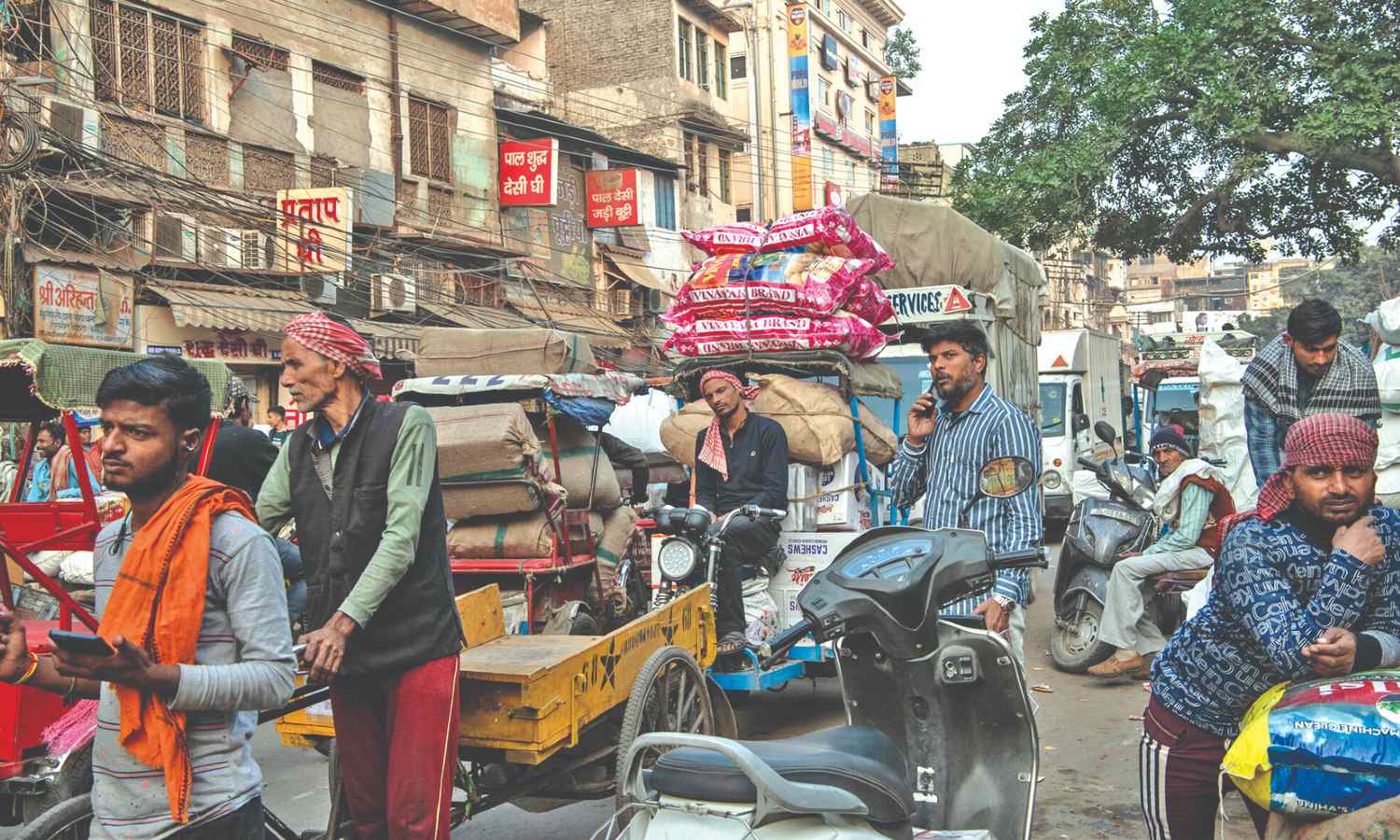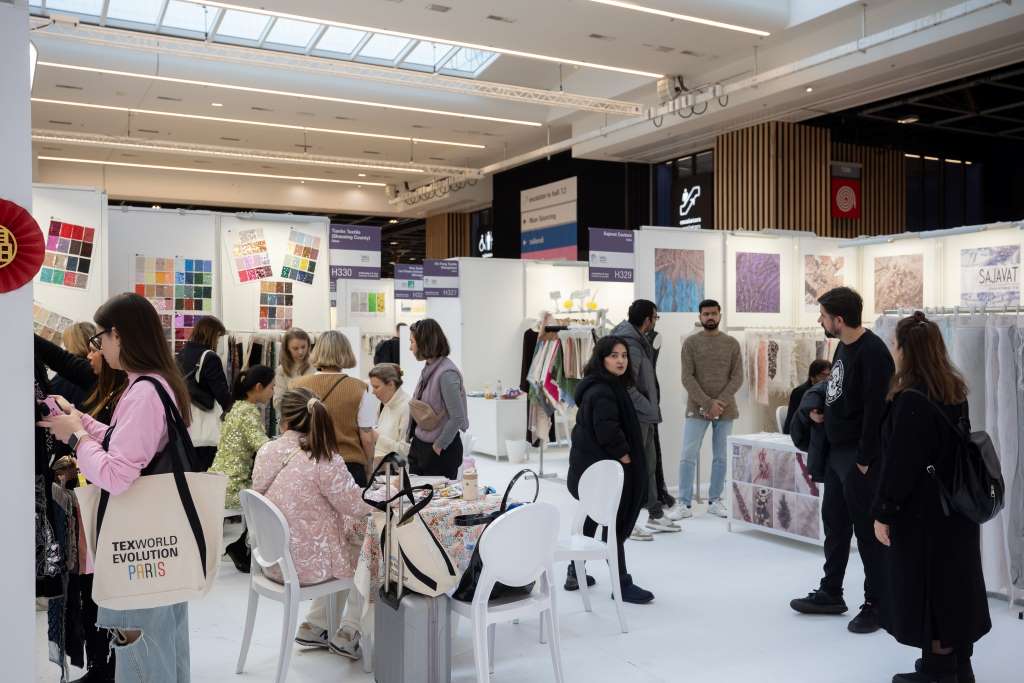FW
Pakistan has imposed a provisional anti-dumping duty on imports of Polyester Staple Fiber (PSF) from China for the next four months. The National Tariff Commission has imposed a provisional anti-dumping duty under the relevant act on all imports of PSF, which is effective from October 2015 till February 2016.
Authorities have defined different duty rates especially for eight Chinese companies to dump PSF into Pakistan, which are from 6.41 per cent to 10.53 per cent while the rest of the others have to pay 14.92 per cent duty on their PSF imports dumped into Pakistan.
The provisional anti-dumping duty has been levied for a period of four months with effect from October 2015 to February 2016 and the customs department would collect it in a similar manner as customs duty collected under the Customs Act 1969.
Duties collected by customs department would be deposited under the head of civil deposits for further deposit in NTC's non-lapsable PLD account established with federal treasury office, Islamabad. The provisional anti-dumping duties would be in addition to other anti-dumping duties imposed earlier and taxes and duties levied under any other law. However it would not be imposed in terms of section 51(1) e of the act on imports that were to be used as inputs in products destined solely for exports.
The Cotton Textile Export Promotion Council (Texprocil) has welcomed the inclusion of exports of cotton fabrics and made-ups to leading markets, including African countries, under the Merchandise Exports from India Scheme (MEIS), which is expected to boost exports. It feels, exports of value added and labor intensive products like cotton dyed and printed fabrics and made-ups to different African countries like Mauritania, Mali, Dar Es Salaam, Burkina Faso, Guinea Bissaou, Niger, Benin, Angola, Senegal, Togo, Ghana, Kenya and Tanzania will receive a huge boost.
The inclusion of various categories of knitted fabrics under the MEIS will also encourage exports of knitted fabrics including knitted fabrics with Lycra. Exports of cotton fabrics would get a further fillip of 10 to 15 per cent and India would also link up with the global value chains by offering products at competitive prices.
If these measures are followed up by the much awaited announcement of the Interest Rate Subvention Scheme, and an increase in the drawback rates, exporters will be able to overcome the difficulties which they are currently passing through due to the slowdown in the world market.
The Director General of Foreign Trade had issued a notice recently for inclusion of exports of cotton fabrics -- both woven and knitted -- and made-ups to leading markets, including African countries, under the MEIS.
www.ieport.com/2015-2020/MEIS.htm

Window solutions for Indian households

In collaboration with more than 600 stores spread all over the country, Deco Window offers wide range of window solutions for Indian homes. The range includes classic to modern profiles. Each piece is engineered for durability, functionality and aesthetics, together with state of the art hardware and custom and automation solutions. “Our commitment to provide ‘complete window solutions’ lies in our expertise to decorate your windows in an affordable and user‐friendly manner, meeting the highest quality standards,” avers Jain.
Window segment is one of the categories, the company enjoys maximum expertise and specialisation in. At the time of the brand launch, 70 per cent of its products revolved around windows and 30 per cent was home décor. So Deco Window was by default the first brand that wanted to be dedicated to the products it had expertise in. “So while designing the brand, we kept the complete window category in mind and that’s why our tag line says ‘complete window solution’. The second focus area was pricing because pricing has to be affordable for the customers. The third area was the quality and the specification since at that point in time, the market wasn’t that matured about product quality. So we wanted to set a benchmark for the best quality available,” asserts Jain.
Jain is not averse to competition since he feels that there are no brands in the market that are selling the same quality at the price offered by Deco Window. “If you say competition in Delhi or Mumbai, yes there are a couple of brands but when you look at competition across India, there are so many places one can venture into,” he states.
Sub-brands to cater to different segments
The company has divided its brands into three segments. Earlier it had Deco Window but now it has launched a brand called Deco Window Essential and would soon be launching a brand called Deco Window Tailor-made. Deco Window Essential is a brand which is one level below Deco Window in price and specification. Deco Window Tailor- made is a brand which is a level above Deco Window in terms of price and specification. “So by dividing our offering under three segments, we would be able to push the matured customers into Deco Window Tailor-made, upcoming customers into Deco Window and completely price conscious or less matured customers into Deco Window Essential. We want to cater to the every section of the society with differentiated brand services to suit their needs,” explains Jain.
One of the biggest challenges in the Indian market, according to Jain is that there is nothing standard about window size. Worldwide the height of the window is pretty good. “But when we look at the windows in India, they vary in sizes. So now we are coming up with program called customisation and make curtains according to the window dimension and size. People who cannot use standard products can customize the curtains according to the size of their windows. Right now the program is only limited to couple of stores. We are planning to expand this program to other stores in the coming years. By 2018, we expect about thousand stores across India and across all partner website and our website to follow this concept,” he informs.The brand is available in 12 states. Now the company is looking at expanding its footprint all over the world under its own brand-name. Explaining, Jain says, “Targeting 120 per cent annual growth, we are looking at different levels of marketing, different levels of sales like you have mass retail, e-commerce, organised retail and we are also looking at creating partners in every society who would sell our products locally. We are branching into institutional sales like window requirement for hotel industry or other institutions like hostels, hospitals and offices.”
www.decowindow.in
Readymade garment exporters' association Bangladesh Garment Manufacturers and Exporters Association (BGMEA) has sent a letter to the finance ministry and National Board of Revenue for reviving 10 per cent reduced income tax rate facility for RMG industry for next 10 years. In a letter to finance minister AMA Muhith, the association demanded a retrospective approval of reduced income tax rate at 10 per cent since July 2014 as the facility ended in June 2014.
BGMEA President Md Siddiqur Rahman said that income tax paid by the RMG exporters on export earnings will be calculated at the regular 35 per cent from the current fiscal year 2015/16 as the special income tax facility at 10 per cent for the export-oriented garment companies expired in June 2014. ‘If the export earnings are calculated based on the income tax at 35 per cent entrepreneurs will have no fund for reinvestment,’ he said in the letter.
Till the last financial year of 2013/14, the tax at source for apparel item exporters was 0.80 per cent on their export which was considered as final settlement under some conditions, according to a statutory regulatory order issued by the NBR in 2005. The conditions include that the revenue board will calculate the annual income of RMG products exporting companies assuming that they paid tax at the rate of 10 per cent on export earnings while their other income will be taxed at the regular rate for companies at 35 per cent.
On the other hand, NBR officials are of the opinion that RMG exporters could show income from export earnings several times than actual ones taking the advantage of the special tax calculation facility under which, from 2005 to June, 2014, taxmen calculated tax at an estimated 10 per cent at the annual tax assessment though exporters paid tax at the rate of 0.80 per cent.
www.bgmea.com.bd
Cotton futures finished with a triple-digit gain in spot December Friday, to close above highs of the previous five sessions. December settled up an even 100 points to 63.32 cents, its highest close since October 21, 2015 and near the high of the session’s 108-point range from 62.36 to 63.44 cents. It gained 56 points for the week and 288 points or 4.8 per cent for the month. March closed up 79 points to 63 cents.
Experts feel that concerns about the cumulative effects of rains on open cotton in the West Texas Plains may have contributed to the advance. Most of the Texas cotton remaining on the stalk is in the high and rolling plains. Volume increased to an estimated 25,600 lots from 22,457 lots the previous session when spreads accounted for 12,463 lots or 56 per cent, EFS 1,000 lots and EFP 70 lots. Options volume totalled 2,654 calls and 2,079 puts. Index fund rolling from December has begun, with the Goldman Sachs roll scheduled to begin next Friday. First notice day for December deliveries is November 23, 2015.
US upland cotton classing increased to 904,417 running bales during the week ended Thursday from 805,581 bales the previous week to boost the total for the season to 2,918,943 RB, compared with 3,900,444 RB a year ago, according to the latest USDA figures. The total amounted to about 23 per cent of USDAʼs upland crop estimate. Tenderable cotton improved to 59 per cent from 57.5 per cent the previous week and rose to 58.1 per cent for the season from 57.7 per cent. A year ago, 73.6 per cent classed for the season met tenderable standards.
Pima classing of 1,602 bales boosted the extra-long staple total for the season to 32,169 bales, down from 59,701 bales graded through the corresponding period last year. On the competitive-pricing front, the average of the five lowest-priced world growths for the Far East fell 123 points to 66.89 cents during the week ended Thursday, according to USDA calculations, while the lowest-quoted US cotton landed there slipped 110 points to 73.30 cents.
The spread thus narrowed 13 points to 6.41 cents. The adjusted world price for the program week ahead is 47.14 cents, down from this weekʼs 48.37 cents, USDA announced, resulting in the marketing loan gain rising to 4.86 cents from 3.63 cents. The fine count adjustment for qualities better than 31-3-35 is 96 points. Meanwhile, unfixed on-call positions based in December declined 808 lots to 12,705 on the mill side and 606 lots to 7,990 on the producer side last week, according to Commodity Futures Trading Commission data.
The net call difference declined 202 lots to 4,715, which was 4.01 per cent of the declining December open interest. The unfixed mill position outweighed that of producers by a ratio of 1.59:1. Mills added 1,246 lots in March and producers added 165 lots. As reported by Dow Jones Newswires, trading in the Intercontinental Exchangeʼs new world cotton futures contract will begin Sunday night alongside its U.S. cotton No. 2 contract. The world contract will trade under the symbol WCT. An ICE announcement said the world contract is not likely to replace the US contract but will have a “smaller, complementary role.”
www.usda.gov
After tasting success in the international markets since 1970, Jayanita Exports launched Deco Window in 2008 to cater to the domestic market. Elaborating on the concept, Vaibhav Jain, CEO, Deco Window says, “The success of the company's products in international markets and prospects of the Indian market encouraged us to launch a brand of decorative curtain hardware collection. In the recent years not only have we cemented our position in the curtain hardware market, but also catered to the soft goods requirements such as curtains, tiebacks and cushions.”
Window solutions for Indian households
In collaboration with more than 600 stores spread all over the country, Deco Window offers wide range of window solutions for Indian homes. The range includes classic to modern profiles. Each piece is engineered for durability, functionality and aesthetics, together with state of the art hardware and custom and automation solutions. “Our commitment to provide ‘complete window solutions’ lies in our expertise to decorate your windows in an affordable and user‐friendly manner, meeting the highest quality standards,” avers Jain.
Window segment is one of the categories, the company enjoys maximum expertise and specialisation in. At the time of the brand launch, 70 per cent of its products revolved around windows and 30 per cent was home décor. So Deco Window was by default the first brand that wanted to be dedicated to the products it had expertise in. “So while designing the brand, we kept the complete window category in mind and that’s why our tag line says ‘complete window solution’. The second focus area was pricing because pricing has to be affordable for the customers. The third area was the quality and the specification since at that point in time, the market wasn’t that matured about product quality. So we wanted to set a benchmark for the best quality available,” asserts Jain.
Jain is not averse to competition since he feels that there are no brands in the market that are selling the same quality at the price offered by Deco Window. “If you say competition in Delhi or Mumbai, yes there are a couple of brands but when you look at competition across India, there are so many places one can venture into,” he states.
Sub-brands to cater to different segments
The company has divided its brands into three segments. Earlier it had Deco Window but now it has launched a brand called Deco Window Essential and would soon be launching a brand called Deco Window Tailor-made. Deco Window Essential is a brand which is one level below Deco Window in price and specification. Deco Window Tailor- made is a brand which is a level above Deco Window in terms of price and specification. “So by dividing our offering under three segments, we would be able to push the matured customers into Deco Window Tailor-made, upcoming customers into Deco Window and completely price conscious or less matured customers into Deco Window Essential. We want to cater to the every section of the society with differentiated brand services to suit their needs,” explains Jain.
One of the biggest challenges in the Indian market, according to Jain is that there is nothing standard about window size. Worldwide the height of the window is pretty good. “But when we look at the windows in India, they vary in sizes. So now we are coming up with program called customisation and make curtains according to the window dimension and size. People who cannot use standard products can customize the curtains according to the size of their windows. Right now the program is only limited to couple of stores. We are planning to expand this program to other stores in the coming years. By 2018, we expect about thousand stores across India and across all partner website and our website to follow this concept,” he informs.
The brand is available in 12 states. Now the company is looking at expanding its footprint all over the world under its own brand-name. Explaining, Jain says, “Targeting 120 per cent annual growth, we are looking at different levels of marketing, different levels of sales like you have mass retail, e-commerce, organised retail and we are also looking at creating partners in every society who would sell our products locally. We are branching into institutional sales like window requirement for hotel industry or other institutions like hostels, hospitals and offices.”
www.decowindow.in
After inaugurating the National Textile Conference-2015 (NTC) on ‘Make In India: Destination Textiles’ organised by The Textile Association (India), Textile Minister Santosh Kumar Gangwar assured the attendees that he would look into the problems faced by the industry and advised the organisers to forward the outcome of the deliberations of two days conference.
The Textile Association (India) - Delhi had organised the ‘National Textile Conference – 2015’ on October 26 and 27, 2015 at PHD House, New Delhi. Sunaina Tomar, Jt. Secretary (Textiles) and Geeta Narain, Jt. Secretary (Textiles) were also present during the inaugural session. Industry leaders like Shekhar Agarwal, Vice Chairman, LNJ Bhilwara Group, V.K. Ladia, Founder Chairman, Shri Rajasthan Syntex Group, Sanjay Jain, Managing Director, TT Limited, Anil Jain, Managing Director, Jain Textile Industries, Shantanu Agarwal, Executive Director, BMD, VK Indrayan and several other industry professionals also attended the conference.
Tomar in her address focused on various issues faced by the textile industry that were subsequently taken up for discussion during the conference sessions. A panel discussion titled ‘Industry Speaks’ was organised, which saw Agarwal, Ladia, Jain, express their views. The panel discussion was moderated by Vikas Bhargava, Organising Secretary of NTC’15.
Closing ceremony on the second day witnessed SK Panda, Secretary Textiles as Chief Guest, who assured complete attention of the Government to the outcome of the conference. He emphasised on the optimised use of the Technology Up-gradation Fund. He also suggested the industry to utilise the funds and schemes launched by the various state governments. Kavita Gupta encouraged the industry to work on research and development to make newer products and also talked about the unique fabrics that India produced during its glorious history.
Ranbir K. Vij, the Chairman of the conference delivered the welcome address, while Anil Gupta, the Trustee of TA(I) Delhi and past president talked about TA(I)’s various functions and activities. Sudhish Aggarwala, President, TA(I)-Delhi in his address summarised the reasons for holding the conference, the situation faced by the textile industry today and its capability of contributing to wealth and employment generation and the vision of the Prime Minister’s ‘Make in India’ campaign. Dignitaries such as RC Jain, Chairman, TT Limited, RP Soni, Chairman, Sangam Group Industries, Balwant Rai, S. K. Khandelia, President Sutluj Group were honored with lifetime achievement awards. Apart from this, scholarships worth INR 1,00,000 were also awarded to some meritorious students.
On the occasion, young designers from Fashion Department of the Amity University, Ginni Devi Girls College ( Modinagar) and TIT&S showcased their wearable designs that were modern yet inspired by India.
www.textileassociationindia.org
While companies around the world have been unveiling innovative textiles with the use of latest textile technology, experts feel that the trend has also made it extremely difficult for consumers to identify the fabric quality while shopping. They feel that it must be mandatory for the companies to use textile labelling for the consumers to make an informed choice.
Most of the countries around the world do have mandatory textile labelling policies. In Canada, for example, the Textile Labelling Act not only ensures complete label information on a wide range of textiles and textile products, but also provides specific provisions to protect consumers from misleading advertising. In the United States, on the other hand, the Federal Trade Commission enforces a similar law and in the United Kingdom, the Textile Products (Labelling and Fibre Composition) Regulations protect the interests of textile consumers.
While India also had a regulation in place mandating labelling of textiles, ignorance by the union government in 2007 made sure that no one bothered about it. The Textile (Consumer Protection) Regulation 1988 made label information mandatory on all textiles. This not only helped consumers make the right choice in respect of the fabric, but also protected them from misrepresentation on quality and manipulation of price at the retail level. The Regulation prohibited incorrect, misleading, illegible or spurious markings. However, in 2002, the consumer affairs ministry removed textiles made of silk, man-made cellulosic and non-cellulosic spun fibres and man-made cellulosic and non-cellulosic filament yarns.
Later another amendment to the Essential Commodities Act in 2006 (that came into effect from February 2007) removed cotton and woollen textiles too from the Act, which entirely put a full-stop to labelling requirement. However, experts are of the opinion, the law needs to be enforced in the country again for the benefit of the consumers.
Textilescommittee.nic.in
The Italian denim industry has triumphed at the second edition of the Global Denim Awards in Amsterdam. A jury of international denim experts selected Sartoria Diletto and Italian mill Candiani Denim as the winning collaboration for this year’s best collection.
Over 750 denim professionals from around the globe were present at the runway show, while eight selected designers were linked to eight denim mills to showcase capsule collections. The teams combined their combined craftsmanship, original designs, and denim innovation.
Denim mill Berto Industria Tessile won the honorary best fabric award as a recognition for its innovative denim fabrics. Mariette Hoitink of HTNK Fashion Recruitment & Consultancy expressed the uniqueness of having the world of denim, which included visitors from Japan, Colombia, India, United States and many other countries– gathering together to preview the future of denim.
The winning collection will be exhibited during the Kingpins shows in Amsterdam, New York and Hong Kong as well as during Amsterdam Denim Days. The collections were judged by an international jury of denim industry experts comprising Pierre Morisset (head designer of G-Star RAW), Menno van Meurs (co-founder of Red Wing Shoes Amsterdam and Tenue de Nîmes), Amy Leverton (author of the book Denim Dudes) and Adriano Goldschmied (denim expert and founder of Diesel, Replay and Gap 1969 and founder of Goldsign). Unique design, innovation, craftsmanship and sustainability were the key factors behind selecting the winning capsule collection.
Recently, The Wall Street Journal reported that Nike, the best-selling sportswear brand in China’s saw sales grow 30 percent for the three months ending August from the previous year. Similarly, Anta Sports Products, the largest local player, clocked a 24 percent y-o-y rise in sales during the first half of the year, while its smaller peer, Xtep International garnered 12 percent.
Now, more Chinese consumers are paying attention to health and sports. According to CLSA, between 2011 and 2014, the number of marathons and marathon participants has more than doubled. Morgan Stanley reports that there were more viewers a game for basketball as the Chinese Basketball Association’s finals saw 50 percent rise this year than the last. Besides, China even won the bid to host the 2022 Winter Olympics.
Around the time China hosted the 2008 Summer Olympics, sportswear sales were booming. However, this quickly turned into a bust for sportswear makers because they over-invested, thus they in 20132 and 2013 they closed stores. According to HSBC, the store count today is 18 percent below its 2011 peak for six Hong Kong-listed sportswear firms. Even the small, unlisted players shut shop.
However, a combination of fresh demand and disciplined supply has again led to a rise in sales and profit. Xtep, for example is upgrading to higher-margin footwear in which consumers can actually run marathons, compared to shoes earlier, which only looked sporty. As per Morgan Stanley, since petrochemicals make up roughly a quarter of raw-material costs, low oil prices too help. Consumers in China now are showing an interest in sports by not just watching them, but playing them too, which is a great opportunity for investors.












